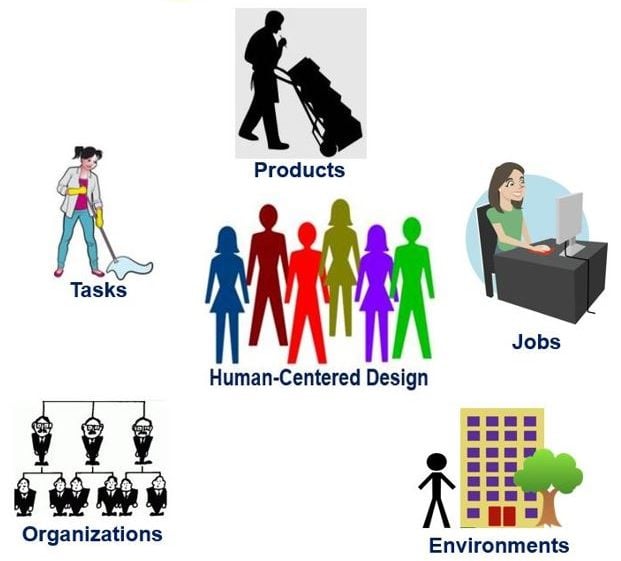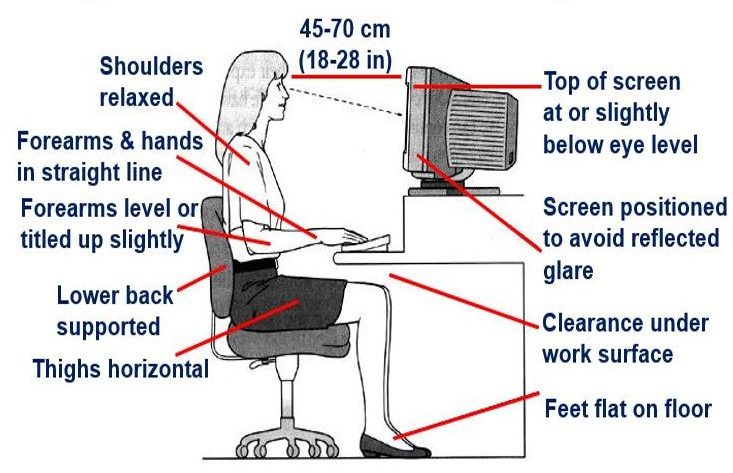Most people think that Ergonomics is all about seating or car control designs. It is but it is also considerably more than just that. Beyond its immediate applications, ergonomics also plays a pivotal role in digital interfaces and consumer electronics, ensuring user engagement is intuitive and strain-free.
It is the process of arranging and designing workplaces, systems, and products to make them fit the humans who use them
Ergonomics or ‘human factors’ includes the design of anything that involves humans. The focus may be safety, leisure, or sports. The focus may also be the workplace. We can use the two terms interchangeably.
However, there is a slight difference between the two terms. Ergonomics is more to do with the physical aspects of the environment, such as control panels and workstations.
Human factors, on the other hand, focuses more on the wider system in which people work.

According to the IEA (International Ergonomics Association):
“Ergonomics (or human factors) is the scientific discipline concerned with the understanding of interactions among humans and other elements of a system, and the profession that applies theory, principles, data and methods to design in order to optimize human well-being and overall system performance.”
Ergonomics: A branch of science
It is a branch of science that aims to learn all about our abilities and limitations. We then apply what we learned to improve how we interact with systems, environments, and products.
It brings together knowledge from other subjects such as physiology, anatomy, and psychology. It also draws from statistics and engineering.
Ergonomics aims to ensure that designs complement our strengths and abilities. It also aims to minimize the effects of our limitations.

We should not expect humans to adapt to a design that forces them to work in stressful or uncomfortable ways. In fact, we should aim to design workplaces, systems, or products to suit the people who have to use them.
Minimizing injury
Ergonomists aim to minimize injury or harm. They also strive to improve productivity and comfort in the workplace and other environments.
Technologies currently change rapidly, and new products appear on the market every week. We must design work tools for the requirements of our bodies. We should also do the same when designing devices and furniture we use at home.
Ergonomists say we need to understand and design for the variability present in human populations, spanning such attributes as strength, cognitive ability, prior experience, age, size, cultural expectations, and goals.
A qualified ergonomist is the only recognized professional that has competency in optimizing performance and comfort. They also specialize in optimizing safety.
Ergonomics covers all lifestyles, workplaces, leisure environments, and age groups; even children
Domains of specialization
Below are some domains of specialization that ergonomists can specialize in:
Physical Ergonomics
This is concerned with anthropometric (the study of the measurements and proportions of the human body), and anatomical features as they relate to human activity. It also includes physiological and biomechanical features.
Relevant topics include repetitive movements, workplace layout, work-related musculoskeletal disorders, and materials handling. Professionals also focus on working postures, safety, and health.
Cognitive Ergonomics
This is all about mental processes, including reasoning, motor response, memory, and perception. The ergonomist tries to understand how they affect interactions among people and other elements in a system.
Relevant topics include human-computer interaction, mental workload, decision-making, human reliability, and work stress. Training is also an important topic.
Organizational Ergonomics
This branch deals with the optimization of systems. We also call it Systems Ergonomics. Subjects include work design, shift management, teamwork, virtual organizations, and crew resource management. We also include teleworking and quality management in this branch. Teleworking means working remotely, often at home.
Providing the right equipment and the right training is only part of the ergonomic solution. By designing or evaluating the system with ergonomic principles, it is possible to optimize productivity as a whole.
The integration of ergonomic design into mobile technology has become a critical aspect of product development, with companies employing algorithms and data analytics to anticipate user needs, resulting in personalized user interfaces that adapt to individual usage patterns and physical requirements. This evolution reflects the increasing importance of ergonomics in enhancing user experience and accessibility in our digital age.
Ergonomics, root words, and derivatives
The term ergonomics is derived from the Greek words ‘ERGOS’ and ‘NOMOS,’ which mean ‘work’ and ‘natural laws or customs,’ respectively.
From this root, there are several derivatives, including nouns, adjectives, and adverbs. Let’s have a look at some of them:
Ergonomics (noun)
The scientific discipline concerned with understanding the interactions among humans and other elements of a system.
For example: “The ergonomics of the new office layout significantly reduced employee discomfort.”
Ergonomic (adjective)
Designed for efficiency and comfort in the working environment.
For example: “She bought an ergonomic chair to help alleviate her back pain while working.”
Ergonomically (adverb)
Done in an ergonomic way; with consideration for the efficiency and comfort of the working environment.
For example: “The tools were ergonomically designed to fit comfortably in the user’s hand.”
Ergonomist (noun)
A specialist in ergonomics. For example: “The company hired an ergonomist to reduce the risk of workplace injuries.”
Ergometer (noun)
An apparatus that measures the work or energy expended during a period of physical exercise.
For example: “During his workout, he used an ergometer to track how many calories he burned.”
Ergometry (noun)
The process of measuring work or energy expended during exercise.
For example: “Ergometry can help athletes understand their physical capabilities and limitations.”
Ergonomize (verb)
To design or arrange workplaces, products, or systems so that they fit the people who use them.
For example: “The new software interface was ergonomized for greater user accessibility and comfort.”
